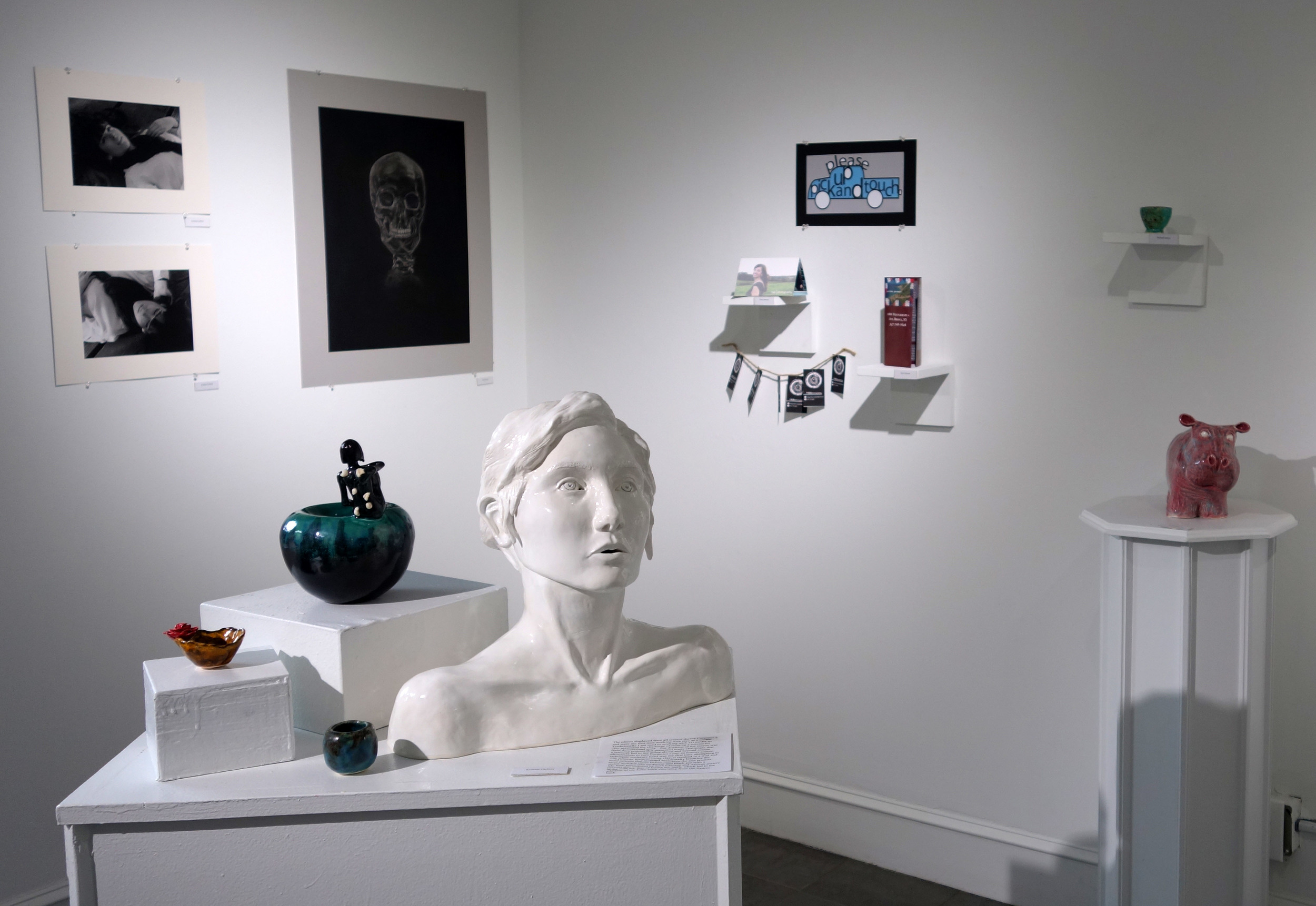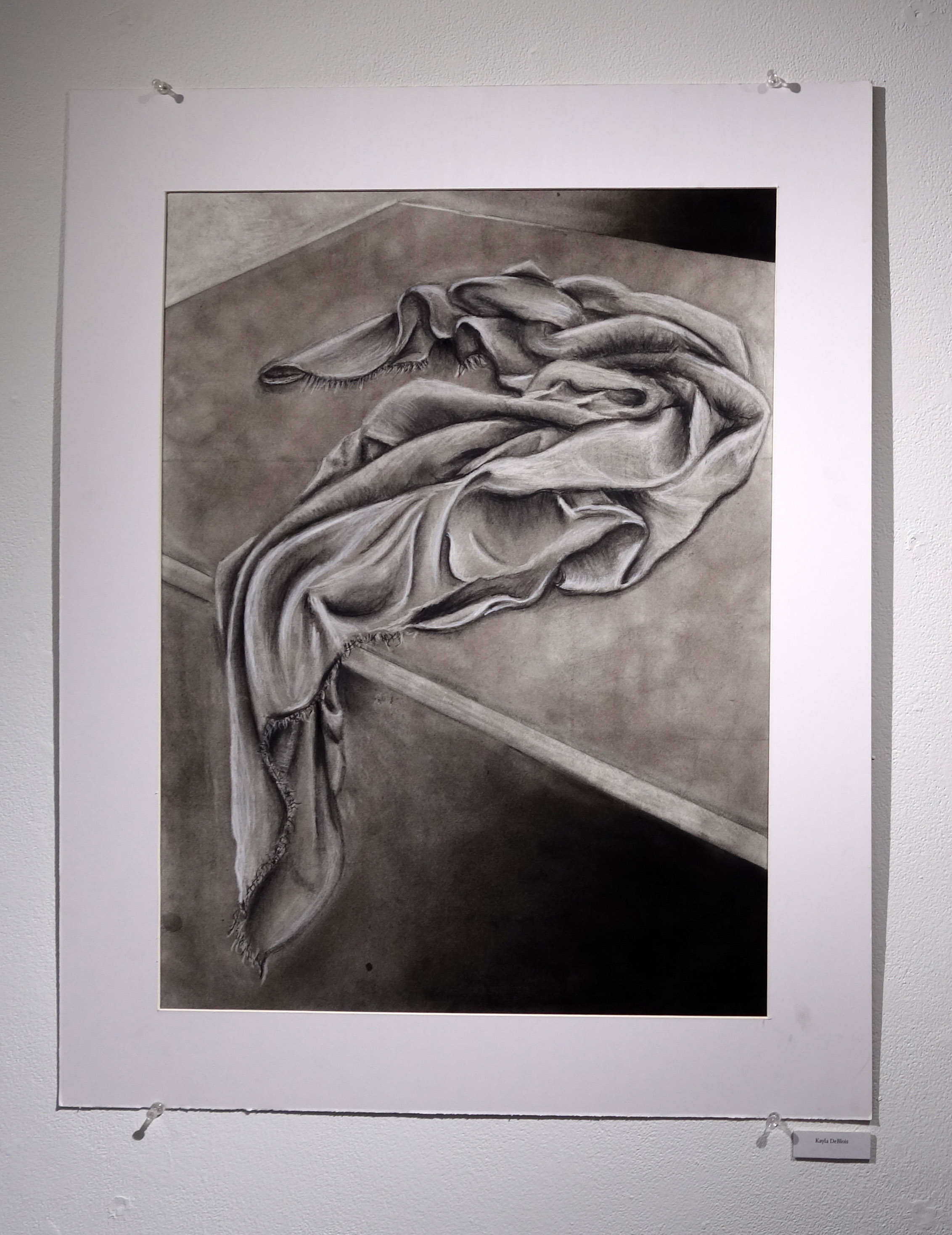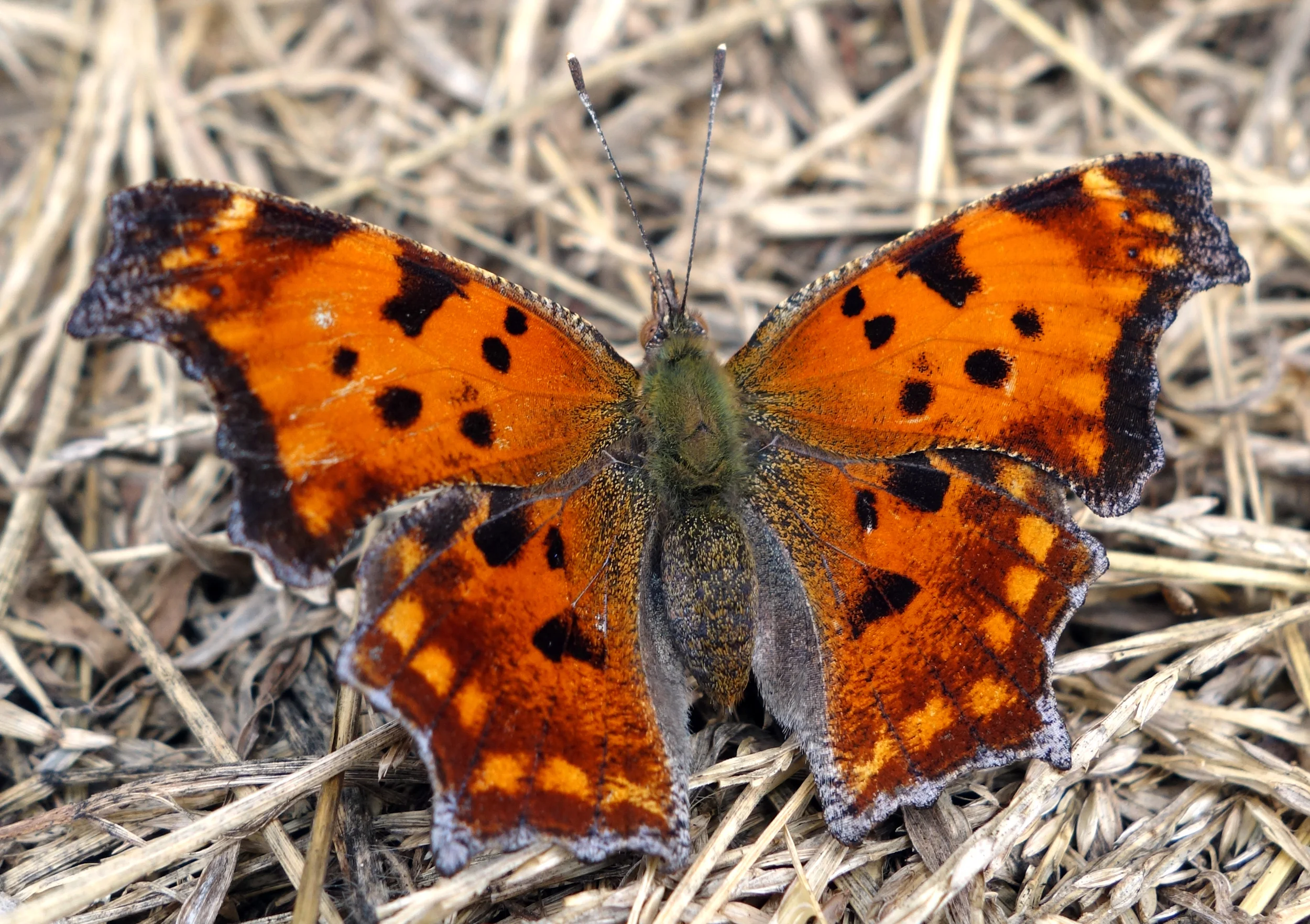My students did some amazing work this semester - this is just a small sampling of what was on display! The courses I taught that have work on exhibit: Drawing I, Computer Graphics, and Advanced Studio in Airbrush.





General Interest
My students did some amazing work this semester - this is just a small sampling of what was on display! The courses I taught that have work on exhibit: Drawing I, Computer Graphics, and Advanced Studio in Airbrush.





This is neat - a developer in the very, very early stages of creating an art collection game called Artfunkel asked me if he'd be able to use my artwork. I checked the game out, and it's educational and attributed, so I said sure! Here are a few of his initial Prindaville card tests. I'll update as the game build progresses.
I love watching my plants flower - it's both a pretty spectacle and also typically a sign they're being well cared for. So far this month I've got a Neoregelia 'Golden Chalice,' Rhipsalis mesembryanthemoides, Mammillaria plumosa, and Gasteria liliputana in flower!
If you recall, my Rhipsalis pilocarpa was in bloom a few weeks ago and its flowering somewhat coincided with my Rhipsalis mesembryanthemoides flowering - so I cross-pollinated (and also self-pollinated) and have some seed pods growing! I'll be interested to see if anything ends up germinating.
I was sick recently, so I had the time to watch the television series Newsroom. One clip really stuck with me:
Now given that this is from a fictional television series, viewers could be forgiven for thinking it an exaggeration. But the facts check out, though sadly a few are outdated and have increased negatively in the meantime.
What really interests me apart from the immediate content is that the whole reason it's funny (admittedly in a macabre sense) is because most scientists are a little less depressingly stark about our situation. Why is that?
It turns out that a recent paper "Duality in Climate Science" published in Nature Geoscience takes scientists and the media to task for underselling our ecological position due to fear of politically and professionally calamitous ramifications. The paper summary reads:
Delivery of palatable 2 °C mitigation scenarios depends on speculative negative emissions or changing the past. Scientists must make their assumptions transparent and defensible, however politically uncomfortable the conclusions.
What that's saying is that unless we can time travel backwards or develop technology in the future that we don't know exists yet, we're screwed. Here's another not-at-all-comforting review of this and other papers saying in part, "The latest installment of depressing news is the delightful prediction that dozens of American cities are at risk of drowning before the century is out, turning places like New Orleans and Miami into the lost kingdom of Atlantis."
New Orleans Glassworks has been experimenting with 3P Quick Cure Clay, and just released this video showing artist Rob Stern using QCC for glass molds.
I've had a few cacti blooming lately - my Rhipsalis pilocarpa, Schlumbergera truncata, and one of my two Gymnocalycium friedrichii. Here are some images of the beauty! Unfortunately I don't have a good photo of the Gymno because its bloom was infested with aphids - in spraying it with neem oil, the aphids have died but the bloom is also not doing so hot. I'll get a photo to share at some point, though!
Interesting things to note about the below two plants: the R. pilocarpa flowers apparently have little scent but what there is smells like a musty basement; the S. truncata is a very difficult plant for me to grow and this is the first time I've gotten one to flower; the S. truncata was purchased on sale without flowers and I did not know it had two different bloom colors.
I've recently placed an interlibrary loan request for Beyond Words: What Animals Think and Feel by Dr. Carl Safina based on both the Jezebel interview and the New York Times review; I've always felt that while there may well be alien life in outer space, there's certainly alien life here.
I am not a fan of using normal acrylic paint in a fine art context. Obviously other artists use them well, but I find they dry way too fast and permanently for my liking and additives like retardant and unlocking sprays don't do enough to mitigate that. I've always loved watercolor paints, and also am quite fond of oils, so I used to think I just wouldn't work with acrylics and that'd be that.
Then I started doing short-term artist residencies.
While some of my residencies had subject matter perfectly suited to watercolor, others had subjects that seemed to call for a more heavy-bodied paint... but the timeline of the residencies meant that oil paints wouldn't dry prior to transportation. I happened to have been gifted a full boxed Modern Colors set of Golden OPEN Acrylics at the 2010 College Art Association (CAA) Conference from a very nice representative, and so while on residency in 2014 when faced with one of these subjects that wanted a more substantial paint, I tried the OPEN Acrylics out. It was a revelation. These acrylics feel like what I always wanted the medium to be: they dry much more slowly than normal acrylics but much faster than oils, and yet still have the ease of normal acrylics, too - they can be thinned and cleaned up with water.
My previous dislike of acrylics was so strong that it took a while for this new world order to sink in, but there's really no denying it now - OPEN Acrylics are one of my favorite mediums.
This is not a sponsored post.
This is a thing that happened. The results are fascinating and not at all illuminatory all at the same time.* Read about it here.
*Don't worry, Lorraine is safe; reading about the experiments was enough for me!
I learned about the existence of the word "octopodes" yesterday and had to go on a research spree. Here is what I've gathered: octopuses, octopi, and octopodes are all acceptable pluralizations of octopus.
I have also just learned that despite the accuracy of the above statements, my spell check firmly denies the existence of both octopi and octopodes (and, in fact, pluralizations). Nevertheless, I'm going to be testing out octopodes as my preferred pluralization for a while. It has a nice sound.
A video demonstrating how to do a "double vision" makeup went viral a few weeks ago, and I agreed that it'd be a good look for Halloween! Here's my version:
This took about an hour and a half to do, but I could've used another fifteen minutes to touch it up - I had to go to work* though, so this was the finished product! The only items I had to buy for this project were the false lashes and lash glue; for the rest of the makeup I just made do with what I already had even if it wasn't absolutely ideal.
*I'm publishing this post on Halloween proper, but I actually dressed up yesterday (Friday, October 30th) to celebrate Halloween with my fellow professors and students at USM.
I have a number of students ask me what careers they can pursue in the arts. This list is by no means exhaustive and includes some careers best served by dual majors, but here are some of the possible employers/roles in no particular order:
With graduate school, additional options open up like art therapy, higher education, and more.
The World Wildlife Fund (WWF) and Zoological Society of London (ZSL) just released a new report detailing a 49% decline "in the size of marine populations between 1970 and 2012."
This follows their 2014 report which states in part that over the past 40 years:
Populations of mammals, birds, reptiles, amphibians and fish have declined by an average of 52%. Freshwater species populations have suffered a 76% decline, an average loss almost double that of land and marine species."
Meet Lorraine!
Lorraine is an adult female Neoscona crucifera spider who has made a number of webs on my front porch this fall. I had noticed her presence a few times in the evenings as she hunted around the outside of my living room window, but we really made each other's acquaintance when she tested out a new web location a few days ago strung up between a potted plant and my front storm door; after I damaged it going out of my door in the morning and then again a second time coming back in later that evening, she took stock of her options and has since restrung her web off my porch railing and my hanging sweet potato vine. I'm interested to see if I'll be able to spot Lorraine's egg sac if/when she lays it since I'm looking forward to trying to witness her offspring hatch next spring.
From The New York Times:
Since at least the 1970s, frog populations have been in decline. A new study in Proceedings of the National Academy of Sciences reports that at least 3.1 percent of frog species have gone extinct, and another 6.9 percent may disappear within the next century.
I've been walking around more than usual lately due to the beautiful fall weather, and I happened across this gorgeous Polygonia comma basking on some dead grass on the edge of my neighbor's lawn. Leavenworth is in the western part of their habitat, which covers most of central to eastern United States. Its coloration seems very seasonally appropriate.

This is a fascinating article about the "internet of fungi." I first learned about this concept through the BBC's documentary How Plants Communicate and Think. It's a bit startling to consider that the "fiction" part of the science fiction blockbuster Avatar didn't extend to the networked plants.
Cephalopods are very smart, and very cool, and I really hope we can keep this prehistoric member of the class alive. Here's some tentatively positive news on that front.
From a Wikipedia research spiral:
Armadillos possess the unique reproductive trait of monozygotic polyembryony, meaning their offspring are genetically identical due to the division of a single fertilized egg into four matching embryos. This development of identical quadruplets has been utilized as a tool for genetic research. It is possible that the monozygotic polyembryony was an adaptation to accommodate for the female’s inability to carry more than one egg during this pre-implantation stage. Delaying the implantation further has no effect on the number of offspring produced.
Armadillos are also carriers of leprosy, as I learned in my Infectious Diseases course in undergrad. And they have the now unfortunate fear response of jumping, which means they often kill themselves on car bumpers when the vehicle would have otherwise safely passed over the animal. They are a fascinating creature.
Research coming out of Stanford University's Emmett Interdisciplinary Program in Environment and Resources is unsurprisingly showing that:
A walk in the park may soothe the mind and, in the process, change the workings of our brains in ways that improve our mental health, according to an interesting new study of the physical effects on the brain of visiting nature.